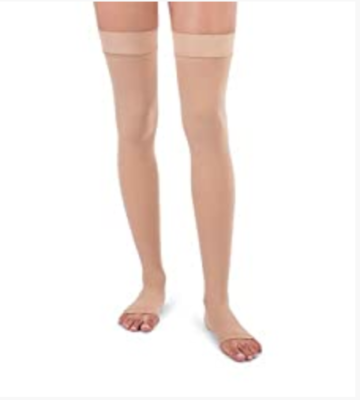Does amlodipine cause ankle or foot swelling? A person in one of my hypertension groups was just started on amlodipine a week ago. Now, she is complaining of swelling in her left ankle and lower foot. She wants to know if the swelling in her ankle and foot is normal.
She is on 25 mg of hydrochlorothiazide and 50 mg of losartan in the mornings, and 50 mg of metoprolol in the evenings. I don’t know the dose of amlodipine, but I will assume that she is taking 10 mg in the mornings. However, usually, a smaller dose is started unless her blood pressure was severe at the time the medication was started.
She is planning to see her cardiologist soon. The question was asked because she wanted to know if the swelling was a problem for anyone else. She also wanted to know if anyone was switched to another calcium blocker due to swelling and if it helped with the swelling.
**This post contains affiliate links, and I will be compensated if you make a purchase after clicking on my links.

Of Note to Put Things In Perspective
Swelling in the lower extremities (legs, ankles, or feet) is a common question about amlodipine. All medications have side effects, but not all or any side effects that are listed will be experienced by most patients. Of course, everyone is different but most people do not have side effects to most medications that treat high blood pressure. Many times, side effects are more likely in high dosages than low to moderate dosages.
**Get these 3M N95 masks to better protect you from the Delta variant and other variants at my affiliated links: size small or large
What is Amlodipine?
Amlodipine was first available to the public in 1992. Since then, long term use has not generally caused a problem for most people. Nevertheless, people with certain diseases or other issues should be careful with amlodipine.
The brand name for amlodipine is Norvasc. Amlodipine is a calcium channel blocker that is used to lower high blood pressure. Calcium channel blockers are one of many types of blood pressure medication. Amlodipine lowers blood pressure by relaxing the blood vessels and reducing peripheral vascular resistance (PVR). PVR is the pressure in your body’s blood vessels.
Your blood flows from your heart through your blood vessels (arteries) bringing oxygen and nutrients to your body. Of course, your body contains cells, tissues, and organs. Your veins are blood vessels that carry deoxygenated blood from your body back to your heart to become oxygenated.
Why is it Important to Reduce PVR?
THE SUM OF Heart rate (HR) stroke volume (SV) and PVR
Amlodipine works by relaxing the blood vessels (arteries) that carry blood away from the heart to the rest of the body, causing less resistance to blood flowing in your arteries.
Does Amlodipine Cause Swelling
One common side effect of amlodipine is fluid retention, commonly called swelling. Swelling can be experienced in your hands or anywhere in the body. If her amlodipine dose is high (more than 5 mg), she may experience swelling in her legs, ankles, or feet.
Her doctor may have prescribed amlodipine in 2.5 mg, 5mg, or 10 mg. In our clinic, we usually see ankle or foot swelling when the treatment is a once-a-day dose of 10 mg, but some people have swelling in a dose of 5 mg. Nevertheless, most people may not have any edema or swelling at all on a high dose (10 mg).
For whatever reason, swelling is commonly seen more often in women who are on maximum doses of amlodipine (10 mg). I can only recall a few men with a complaint of swelling in our hypertension clinic over the last ten years. However, table salt is likely another issue contributing to your leg swelling.
Best Practices When Prescribing Amlodipine
Some health care providers’ best practice is to limit prescribing more than 5 mg of amlodipine in many of their patients to prevent leg swelling.
Amlodipine is our go-to medication for people who have resistant hypertension, that is, blood pressure that is tough to control. People with resistant hypertension are on at least three medications, with one being a diuretic.
The current hypertension guidelines recommend calcium channel blockers (amlodipine) as one of the three first-line drugs to effectively treat hypertension. A water pill (diuretic) and an ACE or ARB are the other two first-line drugs recommended by the guidelines.
The 25 mg hydrochlorothiazide may help to reduce the swelling. However, this might not be the best practice given the known cause of the swelling. Reducing the amlodipine dose will likely address the cause of the swelling.
If not, splitting the dose into half in the mornings and the other half in the evenings usually resolves the swelling.
Why does Amlodipine Cause Ankle and Foot Swelling?
She is likely experiencing swelling in her ankle and foot because of how amlodipine works in the body. Amlodipine only relaxes the arteries and not the veins.
Therefore, blood is pooling in her ankles and foot because she has trouble getting back to her heart at the same rate the dilated arteries are getting the blood to the ankles and foot.  She could ask her doctor if she can try to resolve the symptom with compression stockings, which we used to use. You can purchase compression stockings at my affiliate link here.
She could ask her doctor if she can try to resolve the symptom with compression stockings, which we used to use. You can purchase compression stockings at my affiliate link here.
Also, ask your doctor about compression pants, which can be purchased at my affiliate link here.
Amlodipine is a safe and useful blood pressure medication that doctors prescribe for moderate to severe blood pressure. It is the drug of choice for African Americans and severe blood pressure because it is a dihydropyridine calcium channel blocker.
Dihydropyridines work best in people with a high risk of heart attack, strokes, and severe blood pressure. It does a great job of reducing blood pressure.
Grapefruit juice affects the metabolism of amlodipine and many other calcium channel blockers. Ask your pharmacist or your health care provider before using grapefruits or grapefruit juice with amlodipine.
What is the Solution to Resolving or Preventing Swelling
What should be done about this swelling? Well, it depends on several factors. The most important factor is really patient-centered. In other words, how much trouble is this swelling causing her? If she is hardly bothered by the swelling, then perhaps, it might be safe to say do nothing; do nothing, if it is working to reduce her blood pressure.
She needs to ask her doctor if splitting the dose is an option. If the problem persists with splitting the dose, a different calcium channel blocker might be appropriate.
Nifedipine may be an appropriate substitution that usually does not cause swelling. Doctors prescribe nifedipine in 30 mg, 60 mg, or 90 mg. It is a best practice to start at the lowest dose unless you have severely high blood pressure.
How long will the swelling last?
Sometimes it takes several weeks for the ankle and foot swelling to go away. It takes several weeks, even if the dose is split or the medication is changed. I have even seen it take this long when a water pill is prescribed or increased.
She should ask her doctor if elevating her feet and using compression stockings would help resolve the swelling in her ankle and foot.
Among other things you can do, Doctor Jo has seven ways to reduce leg swelling and leg fatigue in the video at this link. Doctor Jo is a licensed Physical Therapist and Doctor of Physical Therapy.
Below is the equipment she used (except compression pants):
1) Padded leash 2) Pool noddle 3) Compression pants
What to Do When Medication is Adjusted?
Regarding the person in my hypertension group, here is what she should do if her medication is adjusted. It does not matter if the medication is split, decreased, or if changed, she should use a home monitor.
Home blood pressure monitoring is necessary to monitor any changes in her blood pressure control due to the adjustment or change. She should monitor for at least two weeks after the change and a week before the next office visit.
Click here to purchase a validated blood pressure monitor and here for instructions on a good blood pressure monitoring technique.
If there are any changes in her blood pressure either too uncontrolled or too low, she needs to notify her health care provider.
What are Other Issues with Amlodipine?
People with coronary artery disease, a condition of the blood vessels accompanied by chest pain, may experience more frequent or worsening chest pain with amlodipine. She should report chest pain or worsening chest pain to her doctor if she has it as soon as possible.
Amlodipine can build up in the body of someone with liver disease or liver failure. Sometimes people with liver disease are prescribed lower doses of amlodipine such as 2.5 mg or no more than 5 mg.
https://www.youtube.com/watch?v=yXiRobOZeB8
Conclusion
Everybody is different, and everybody does not experience the same side effects from medication. All medicines have side effects, and her doctor will select the best remedy for you based on many different factors.
During an office visit, doctors collect a lot of information that is combined with a physical exam and blood pressure readings to make an appropriate clinical judgment. In this case, the appropriate treatment was amlodipine.
However, amlodipine caused swelling in her left ankle and lower foot. Based on the severity of her symptoms, how well she tolerates the side effects, and the disabling factors, a change in medication may be needed.
Her doctor is the only one who can safely adjust her medication type, amount, and frequency.
Since she is having side effects from what appears to be amlodipine, her blood pressure medication may need to be adjusted. She should not hesitate to call her doctor or your nurse about this issue. She should not be shy.
#amlodipine #ankleswelling #highbloodpressure
Other things you can do to help lower your blood pressure
Disclaimer: This is not medical advice. Please consult your health care provider for all medical advice. Affiliate links support the channel with a small commission if you make a purchase. Thanks in advance for your support!